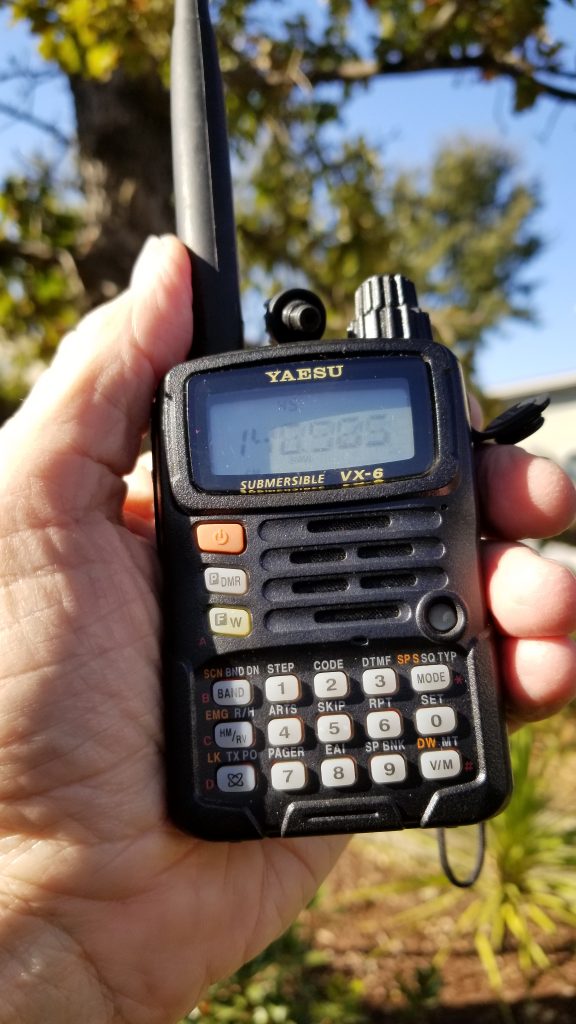A tiny light-weight two-way radio is your key to communication with the outside world when your phone link is gone. Buy a capable one. And remember, a radio you don’t know how to use is just dead weight. Learn how to use it before you venture out into the great beyond. A typical one, no larger than a pack of cigarettes, is shown below.
You will see them on sale for anything from $30 to $500. These are formally called amateur radio handheld transceivers, and informally just HT’s, or sometimes “handy-talkies”.
Do not feel you need to go for either extreme of cost. There are certain features you will value, and many more that you will never use. Between $40 and $150 will get you a capable transceiver you will find useful for many years.
One significant warning! Make sure the instructions are written in understandable grammar. There are a few radios out there with instructions that are simply incomprehensible because of poor translation. Check the advertising material describing the product: if it is hard to decipher, do not buy the product!
You do want a 2-band FM transceiver, which will let you communicate on the two amateur frequency bands of use to us, 2-meters and 70-centimeters. FM is the only communication mode you need; you have no need of digital special modes. (The HT must, however, be able to transmit PL tones — more on that later). It should have about 5 watts of transmitting power, a built-in microphone and speaker, a self-contained rechargeable battery, and a detachable short flexible (“rubber-ducky”) antenna. For ARRUMBA purposes, you will not really need any other hardware, such as hand-held microphone or external speaker, etc.
Certain features are quite desirable, however. While practically every radio you may look at will likely have them, you should check just to be sure:
- When receiving, you should be able to set the radio to Scan, so it continuously listens momentarily on every frequency and stops briefly when it finds a signal. If you can hear someone talking, you might want to try to call out your urgent message on that same frequency. (The faster the radio can scan, the better; but this is not crucial.)
- Scanning the whole frequency band is often not necessary. You should be able to program your radio, so it only listens on those frequencies of interest; and once you pause the scan, you should be able to switch to any one of those frequencies easily (usually by turning a knob) for transmitting a call. Not necessary, but helpful, is the ability to store channels in separate memory banks, so only selected channels need be scanned.
- How you program the HT is important; it can be complicated, unless there is a computer connection and software to make it easy. Inquire about that before you buy, and find out its additional cost. (One such program, CHIRP, is likely available to you free online). Fear not, though: once your HT is programmed (with or without software), you will rarely have to make any more changes.
- The HT should have a backlight for the display, so you can see it at night when you press a button, and see the numbers when you are inputting a frequency.
- There should be a Squelch control, so you can have the radio stay silent when it is only receiving noise and no voice.
- You can carry an extra battery for your radio if you have one. For more flexibility, try to get a radio that has an input for external power; then you can find ways to save your internal battery by using your car’s power while driving, or make up external battery packs you can carry that will last far longer than the radio’s internal battery.
- A nice extra is the ability to receive standard broadcast signals. These are often high-power signals, and may let you know what is going on in the world while you are still trying to get your message out. There are also weather reporting and forecasting stations you may find useful. You cannot transmit back to these stations (they don’t listen anyway), but just hearing them may be comforting.
| Previous Page | Next Page |

